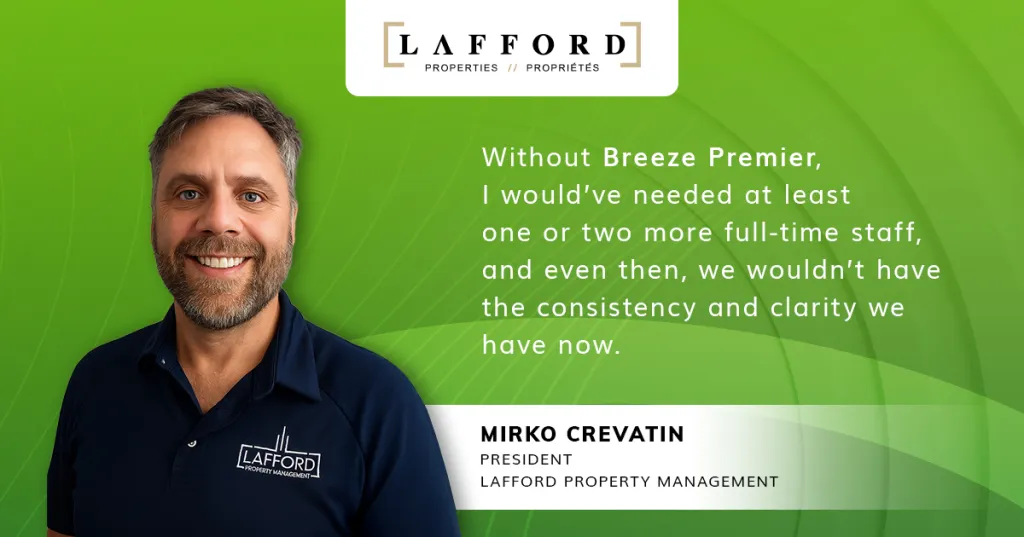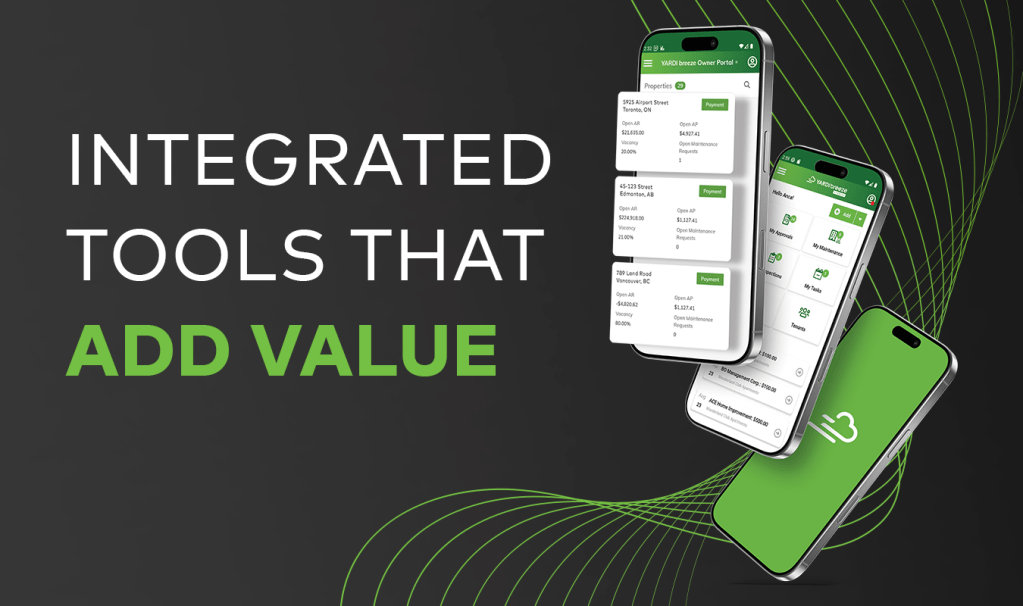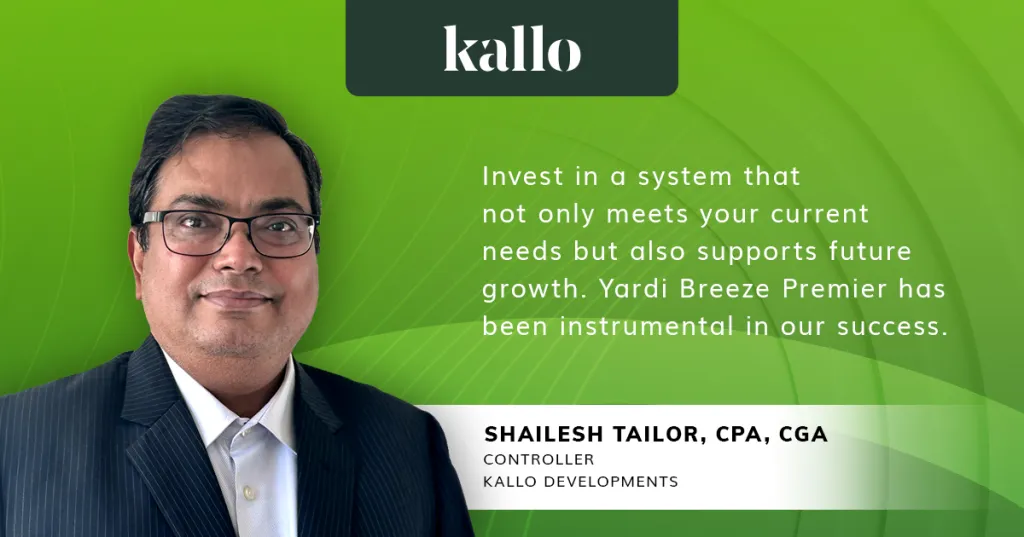
Based in New Brunswick, Lafford Properties is a privately owned real estate development and property management company. With nearly 800 residential units and almost 500 apartment units under construction, the company is growing fast, without adding layers of staff or complexity.
To meet those challenges head-on, Lafford implemented Yardi Breeze Premier. We spoke with Mirko Crevatin, president of Lafford Property Management, about how his team streamlined operations, improved rent collection and laid the foundation for third-party management.
Outgrowing manual tools & legacy habits
Before implementing Breeze Premier, the team at Lafford relied on spreadsheets, notebooks and inconsistent internal processes. “We had property managers tracking rent in Word documents,” said Mirko. “Everyone had their own way of doing things, which made growth chaotic and unsustainable.”
Mirko, who joined the company after a 30-year career in IT and management consulting, immediately recognized the need for a centralized system. “Without Breeze Premier, I would’ve needed at least one or two more full-time staff, and even then, we wouldn’t have had the consistency and clarity we have now,” he explained. “It’s a telephone game when you don’t have a central system of record. Breeze Premier is our system of record.”
Built-in workflows that support growth
The team adopted Breeze Premier, helping them manage leases, rent collection and tenant turnover with confidence and consistency. “It’s the backbone of our operations,” Mirko said. “From move-ins to rent proration, everything is connected, and that feeds directly into our RentCafe websites.” He added, “If someone asks me for the ledger, I go click, click and here you go, every transaction from the last year in two seconds.”
That integration has saved the team countless hours and helped them maintain visibility across a growing portfolio. “We’re now turning over units faster and with fewer errors. I don’t want to imagine a world where we go back to doing this manually,” said Mirko. He described Breeze Premier as a critical tool for tenants too, helping minimize the cumbersome and error-prone processes that used to slow them down.
Modern websites that meet tenants where they are
To support leasing, the team launched two custom RentCafe websites, a move that’s changed the way they engage with prospective tenants. “We’re transparent about everything, square footage, rent, availability,” said Mirko. “It saves time and builds trust. Most people don’t want to call, they want to self-serve. And now they can.”
The result? Fewer phone calls to the office, more email leads and a better leasing experience overall.
A lean team with a strong foundation
With a portfolio on track to double again, Lafford is future-proofing its operations. “I built this team from scratch using Breeze Premier as the framework,” said Mirko. “We don’t fight the software. If it has a way of doing things, we do it that way. That’s how we’ve built consistency.” By relying on Breeze Premier, the team has been able to create defined internal processes that scale with the business.
With more growth ahead, they’re focused on evolving as Breeze Premier continues to evolve as a platform.
Looking ahead: third-party management & self-service tools
Next up for Lafford? Expanding into third-party property management. “That means learning how to silo financials, set up multiple owners and report accurately,” said Mirko. “We know Breeze Premier can support us as we grow.”
The team also plans to roll out tenant-facing RentCafe features like online maintenance requests and rent payments. “We’re starting to explore more automation, but only where it makes sense and adds value.”
Advice for other property managers
“Don’t be a salmon, be a jellyfish,” said Mirko. “Go with the flow. If you’re a small company, don’t fight the system. Build your processes around the tools you have.”
By adopting Breeze Premier, Lafford has created a scalable, repeatable framework to support continued growth without sacrificing service, visibility or control — and they’re just getting started.



